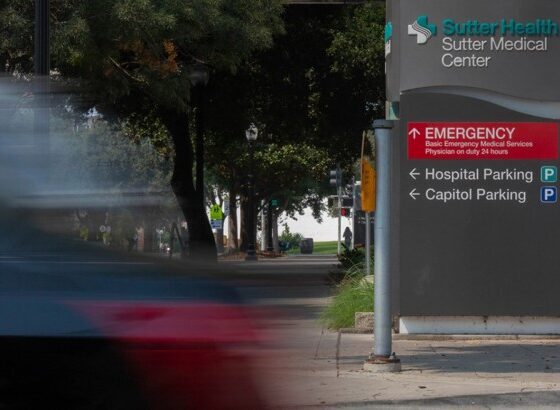Medical costs are on the rise again. Read about the high costs of cancer treatments that are unfortunately becoming more and more out of reach, not only for the uninsured, but for the insured as well.
By Debra Sherman
(Reuters) – The skyrocketing cost of new cancer treatments is putting advances in fighting the deadly disease out of reach for a growing number of Americans.
Cancer patients are abandoning medical care because the costs are simply too high and medical bills — even among the insured — are unmanageable and put patients at a greater risk of bankruptcy, studies show.
“There’s a growing awareness that the cost of cancer treatment is unsustainable,” said Dr. Lee Schwartzberg, an oncologist who did a study examining the factors that contributed to patients quitting their oral cancer drugs.
Cancer is one of the most costly diseases to treat, largely because many patients are treated over a long term, often with expensive new drugs that are complicated to produce and not available in generic form. As insurance companies cut all benefits, reimbursements on cancer treatments have also declined.
“When it’s an expensive drug, we have to have the hard discussion about a very substantial out-of-pocket payment. I ask: ‘Do you want to spend this money for an average improvement of just a few months of life?’ I’m very uncomfortable having those discussions because I want to focus on the patient getting better,” Schwartzberg, medical director of the West Clinic in Memphis, Tennessee, said in an interview.
Schwartzberg’s and other cost studies presented at the American Society of Clinical Oncology (ASCO) annual meeting come as U.S. lawmakers battle over ways to reduce the national debt, including cuts in healthcare funding. (For full ASCO coverage, see [ID:nN05141382] )
ASCO president Dr. Michael Link, a pediatric oncologist, said access to healthcare should be a national priority.
INSURMOUNTABLE BARRIERS
“We’re thrilled with what we consider to be breakthroughs and wonderful new therapies … yet the barriers for some patients to get them is insurmountable. It is an indictment of how we take care of patients in the United States,” Link said.
Cancer is the second-leading cause of death in the United States, after heart disease. The incidence is expected to increase with an aging population.
The costs for cancer care topped $124 billion in 2010 in the United States, led by breast cancer, according to the National Cancer Institute (NCI). That number is expected to rise as more advanced treatments — targeted therapies that attack specific cancer cells and often have fewer side effects — are adopted as the standards of care. The NCI projects those costs to reach at least $158 billion by 2020.
Until recently, almost all cancer drugs were administered intravenously. Today, about a quarter of them can be given orally, which means fewer visits to the doctor. But pills are often more expensive, have higher co-payments, and are reimbursed by insurers at lower rates than IV drugs, he noted.
Using a database of pharmacy claims paid by private insurers and Medicare, he found, not surprisingly, that those with higher co-payments quit their drugs more often.
Patients with co-payments of more than $500 were four times more likely to abandon treatment than those with co-payments of $100 or less, Schwartzberg said. Claims with the highest co-payments had a 25 percent abandonment rate, compared with 6 percent for co-payments of less than $100.
“Prices of drugs can’t be set so outrageously high,” he said. “We have a problem with cancer care … All stakeholders have to get together and compromise to translate this great science into great patient care without breaking the bank.”
Dr. Yousuf Zafar, an internist at Duke University Health System, did a separate study on the impact high medical bills have on patients’ cancer treatment.
THE INSURED ALSO STRUGGLE
The thing that surprised him most, Zafar said, was how much the insured struggled with their medical bills.
“Ninety-nine percent of the patients in our study were insured and 83 percent said they had prescription coverage. People still couldn’t afford groceries and were spending life savings on cancer care,” Zafar said.
Even with health insurance, out-of-pocket expenses averaged $712 per month for co-payments for doctor visits, prescription drugs, lost wages, travel to appointments and other expenses.
Jean Holstein, 55, of Jackson, North Carolina, has Stage IV breast cancer. She has been receiving treatment for eight years. She has health insurance, but fears the co-payments to cover her $5,000 per month drug regimen, plus the $9,700 bimonthly diagnostic scans, will leave her broke.
“The joke is that when you get cancer, you go spend all this money and live it up,” she said.
Rates of medical debt are growing, mainly among the insured. According to the American Cancer Society (ACS), one in five privately insured Americans with chronic conditions have problems paying their medical bills. When out-of-pocket spending for medical care exceeds 2.5 percent of income, financial burdens become substantial.
RISK OF BANKRUPTCY
Dr. Scott Ramsey authored a study that examined a cancer diagnosis as a risk for personal bankruptcy. Using cancer registries and bankruptcy records in Washington state, he found that a diagnosis of lung cancer had the highest risk of bankruptcy — 8 percent versus 0.3 percent in the general population in the same geographic area.
“We looked at (bankruptcy) one, three and five years after a diagnosis and the rate ranged from two to six times higher,” he said.
Dr. Ronald Ennis, a radiation oncologist at St. Luke’s-Roosevelt and Beth Israel Medical Center in New York, studied the impact of a weak economy on the diagnosis and treatment of cancer. He said he found exactly what he had expected: There was a dramatic decline in cancer treatment during times of high unemployment.
Ennis looked at data from 1973 to 2007, the latest year for which data was available, and found that every 1 percent increase in unemployment was associated with a 7.4 percent decrease in diagnoses, a 16.8 percent decrease in radiation treatment and a 23.9 percent decrease in surgery.
“I suspect the recession we just had would have had an even more dramatic impact,” Ennis said.
Dr. Otis Brawley, the chief medical officer for the ACS, said the whole American medical system needs to be overhauled.
“We need to change the culture of doctors and patients and how medicine is practiced. I wish it were as simple as (enacting) legislation,” he said. (Reporting by Debra Sherman, editing by Gerald E. McCormick and Matthew Lewis)
You might also like


